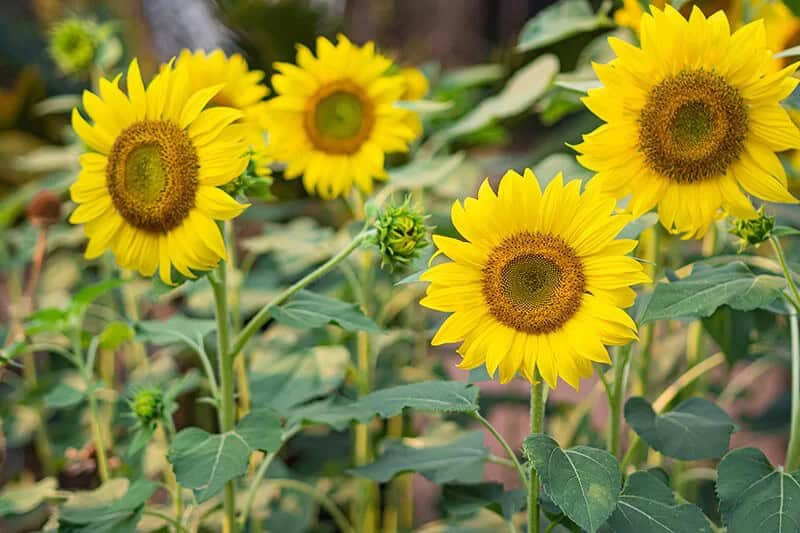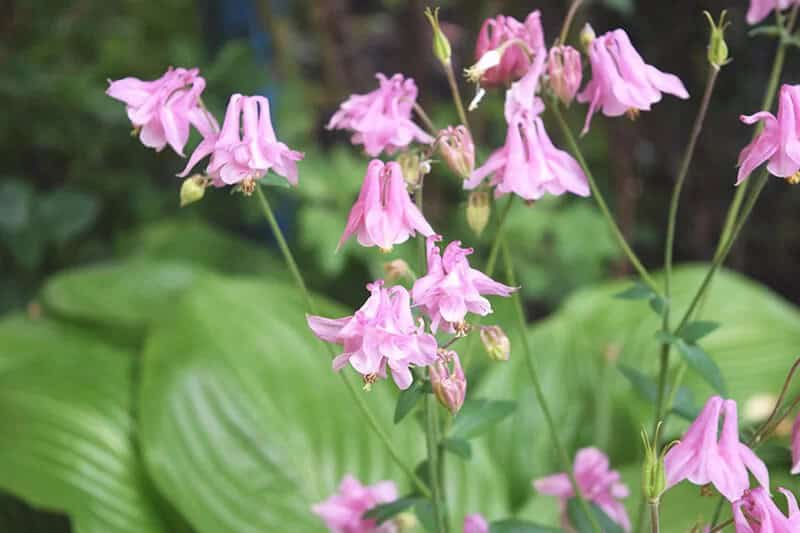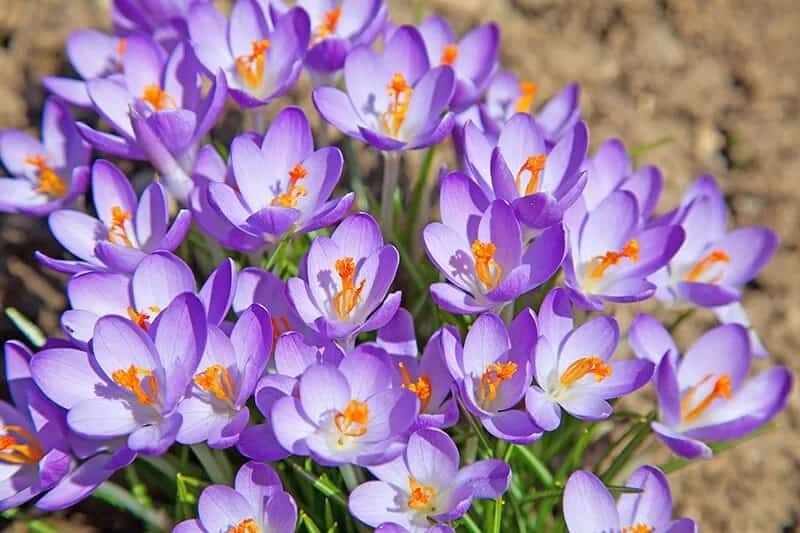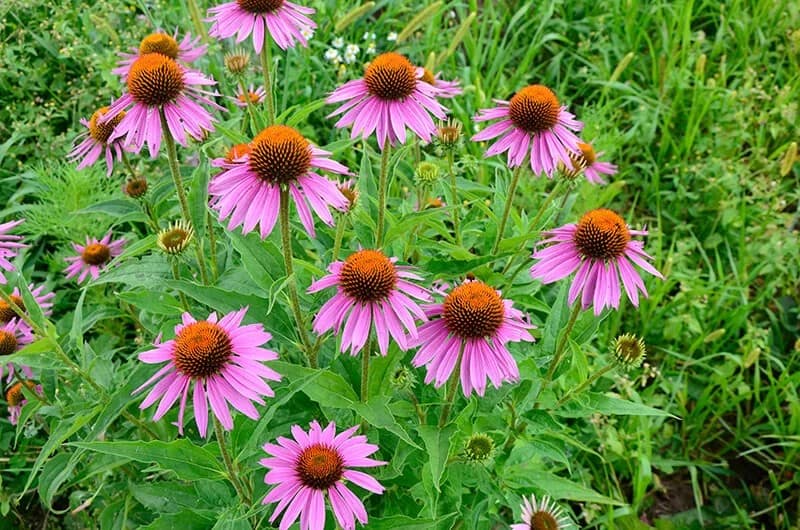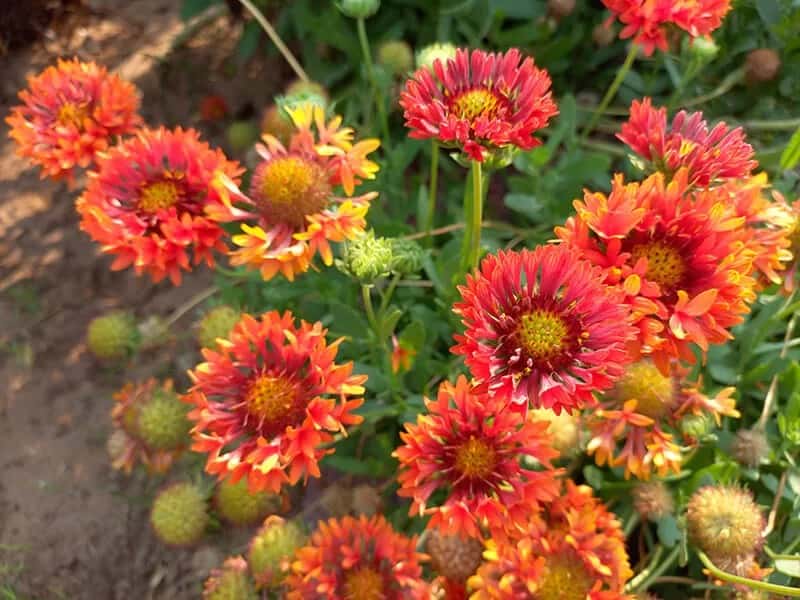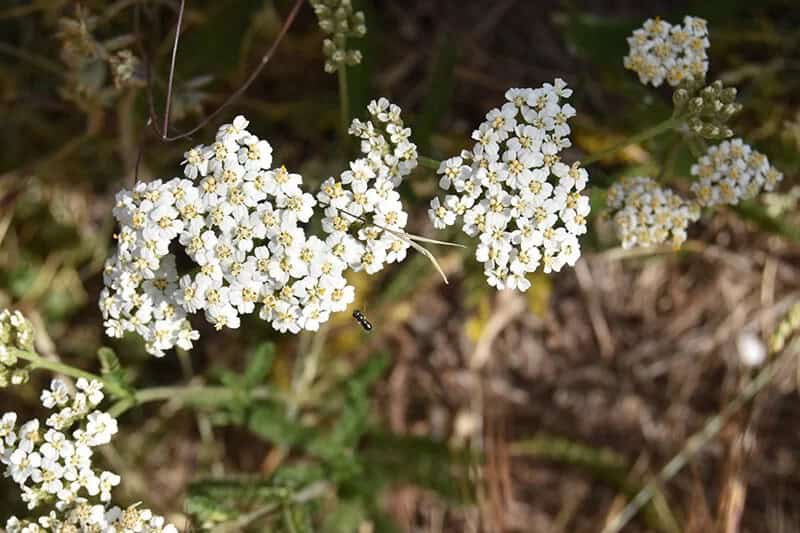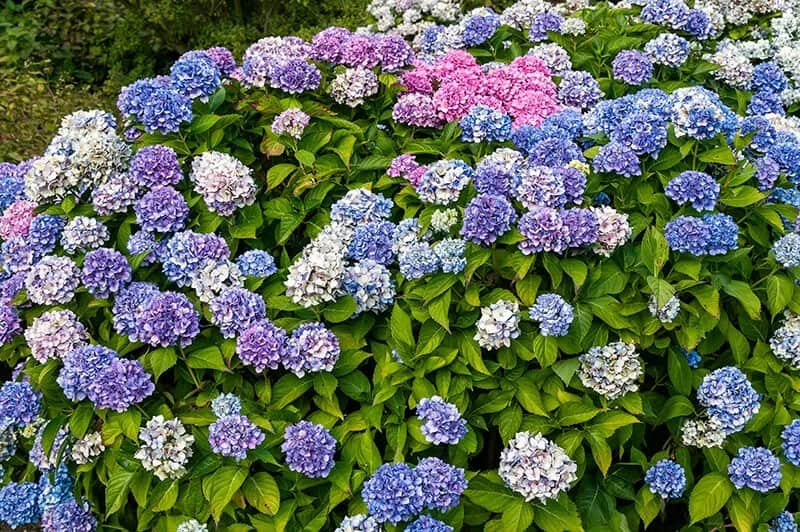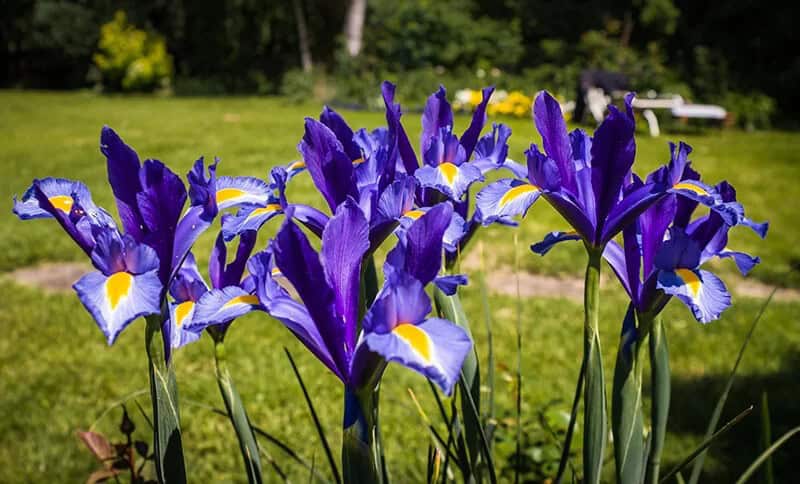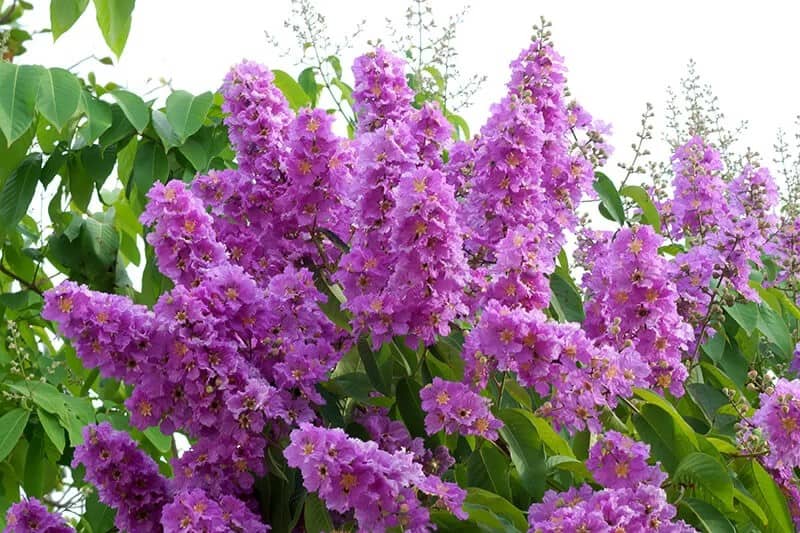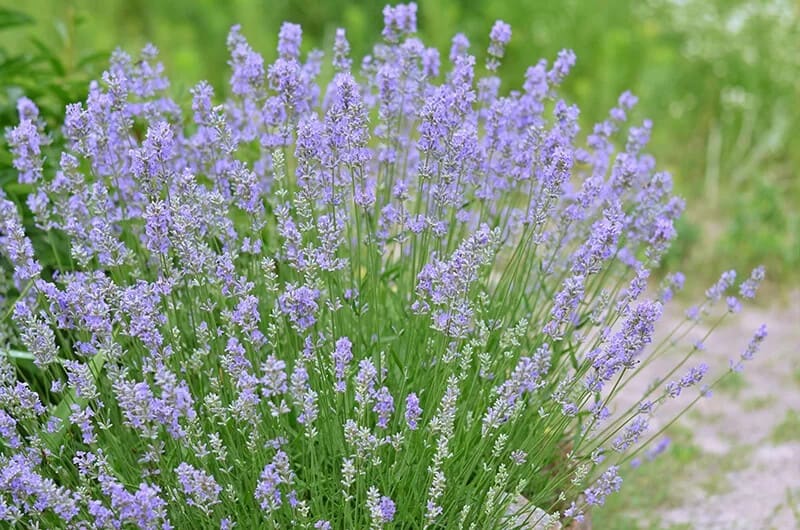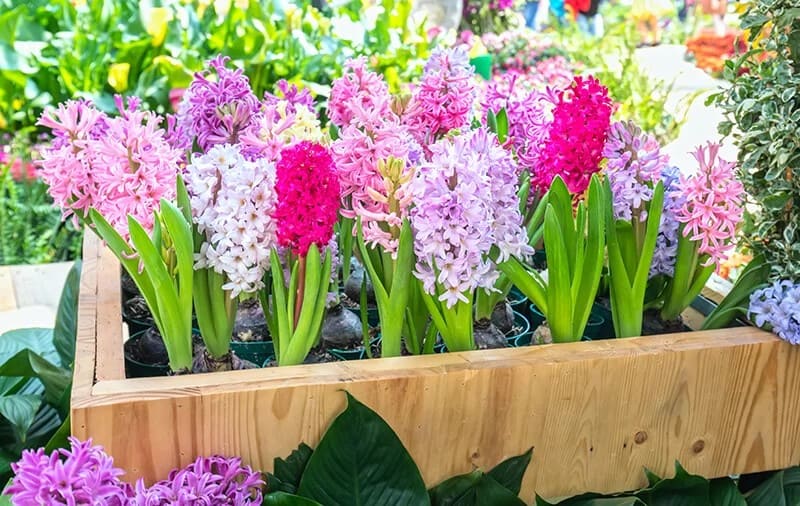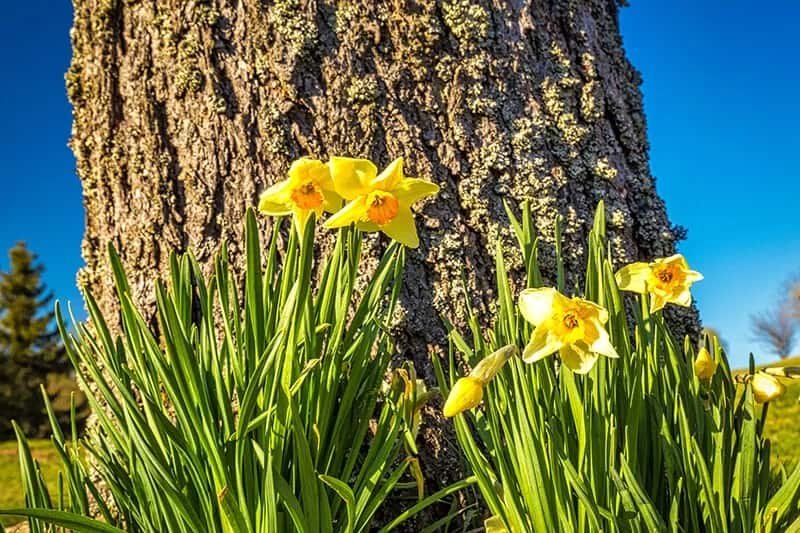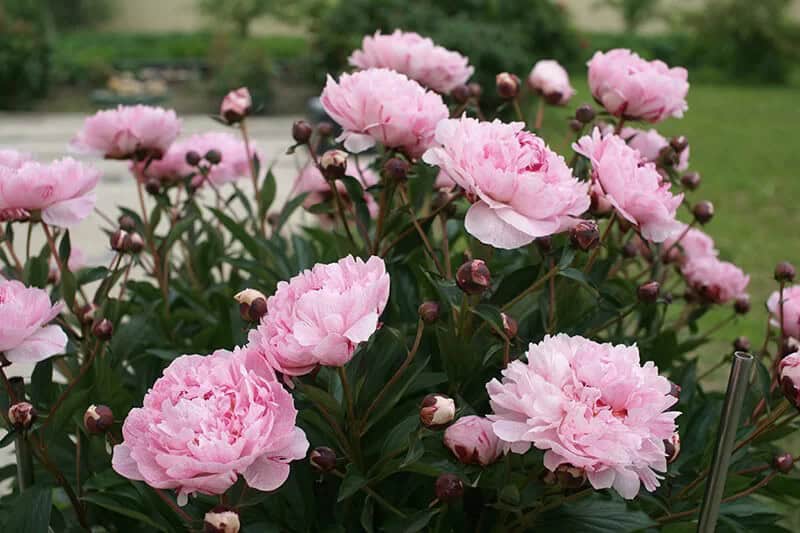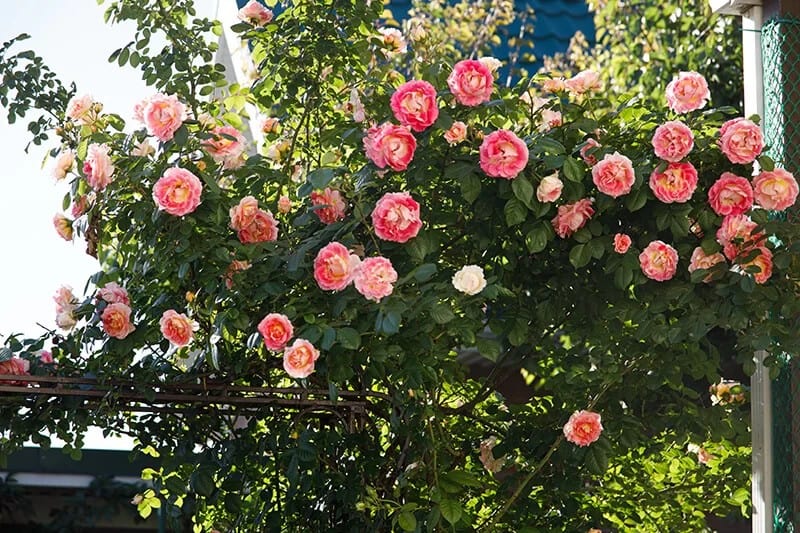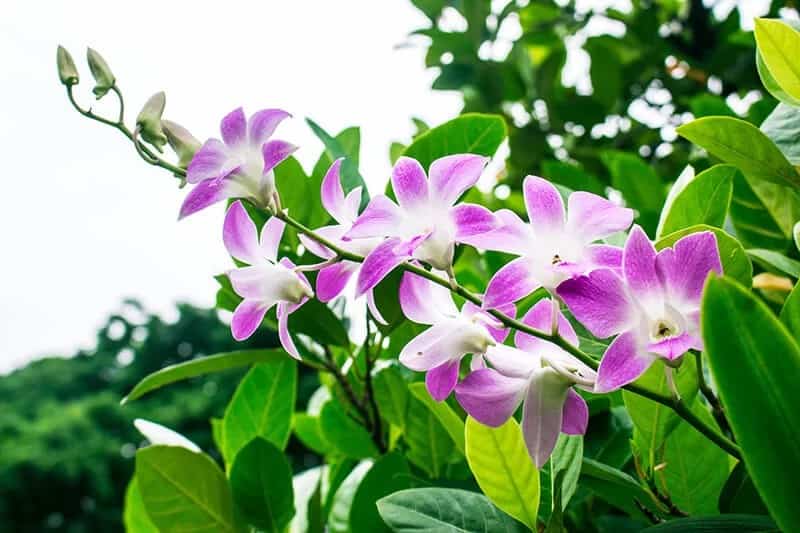Transforming your garden into a vibrant watercolor reference space doesn’t require artistic expertise. In fact, anyone can appreciate the beauty of these blooms, regardless of their painting skills. For artists and those who enjoy dabbling in watercolors, these flowers will serve as stunning living models to inspire creative expression. When selecting plants for your watercolor garden, prioritize those that will be most delightful to depict on canvas.
27 Dazzling Watercolor Flowers that will Make Your Garden Feel Like an Artwork
Unleashing creativity with watercolor flowers, one can find inspiration in the subtle beauty of calming blooms as well as the vibrant colors of joyful ones. The artistic possibilities seem endless when it comes to these captivating floral designs. Whether you’re a seasoned gardener or just starting out, there’s a watercolor flower arrangement that will thrive in your unique outdoor space, be it a modest container garden or an expansive acreage.
Sunflower (Helianthus Annus)
Sunflowers are undeniably attention-grabbing, boasting a range of vibrant colors from deep burgundy to soft white hues. Their symbolism is deeply rooted in conveying unwavering faith and unconditional love. These striking flowers require a moderate amount of water, tolerating dry spells but thriving in well-drained soil conditions. With a growing zone ranging from 2 to 11, sunflowers can be enjoyed by gardeners across various climates.
When grown in full sun, they produce an abundance of seeds that are not only visually stunning but also edible. Whether cultivated in a traditional garden setting or a more modern patio space, sunflowers are sure to impress with their towering stature and bright blooms.
Columbine (Aquilegia Canadensis)
The beauty of columbine lies not only in its unique origami-like flower shape but also in the symbolism it embodies – endurance and perseverance. This delightful plant requires medium watering needs, well-drained soil, and thrives in growing zones 3 to 8. With full sun to part shade light conditions, columbine bursts into bloom from April to May, creating a stunning display of watercolor-like flowers when multiple colors are present.
Its tendency to spread freely may prompt you to consider containing it, but the end result will be well worth the effort.
Butterfly Bush (Buddleia Davidii)
Butterfly bush, with its vibrant blooms and symbolism of rebirth and resurrection, is a stunning addition to any garden. With medium water needs and the ability to thrive in well-drained soil that tolerates clay, this beauty can be grown in zones 5 to 9. Full sun is also essential for optimal growth.
From June to September, butterfly bush produces stunning 7-inch conical clusters of densely packed flowers that are not only a feast for the eyes but also attract butterflies and other pollinators outside, and make for lovely cuttings inside.
Aster (Aster x Frikartii ‘Wunder von Stafa’)
The symbolism behind the Wunder von Stafa aster is rich in meaning, representing wisdom, faith, and valor. When it comes to its growing conditions, this variety of flower requires medium watering, average well-drained soil, and can thrive in zones 5-8. With full sun to part shade, this bloomer is sure to impress from July to September.
One of the unique features that sets the Wunder von Stafa apart is its striking color combination, with lavender-blue petals contrasting beautifully against vibrant yellow centers – a perfect choice for gardeners looking to add some visual interest and watercolor-inspired beauty to their outdoor spaces.
Clematis
The symbolism behind clematis is often associated with ingenuity or artifice, making it a thought-provoking addition to any watercolor floral scene. When it comes to its growing conditions, clematis requires a medium level of watering, well-drained soil, and can thrive in zones 4 to 9. In terms of light exposure, it does best in full sun to part shade, with the blooming season typically occurring from June to September.
While creating a watercolor painting featuring these flowers, consider incorporating a trellis as a backdrop to add structure and visual interest. By experimenting with different types of trellises, you can create a unique and captivating composition.
Uruguayan Pampas Grass (Cortaderia Selloana)
A stunning visual element, Uruguayan Pampas Grass boasts impressive features that make it a prized addition to any landscape. This ornamental grass thrives in conditions of moderate water availability, tolerating drought but excelling when provided with well-drained soil. Its optimal growing zones range from 8 to 10, while full sun exposure brings out its best qualities.
The flowering season spans August to February, during which it produces an abundance of massive, fluffy plumes that can reach up to 12 feet in height. These showy features make Uruguayan Pampas Grass a popular choice for borders and backgrounds in outdoor landscapes. Moreover, its unique appeal extends beyond the garden, as it also excels in dried arrangements, offering an attractive element for still life paintings.
Spring Crocus (Crocus Vernus ‘Purpureus Grandiflorus’)
The symbolism of the crocus flower is deeply rooted in themes of rebirth, innocence, joy, and new beginnings. This early spring bloomer thrives in environments with medium water needs, gritty well-drained soils, and full sun to part shade. In USDA growing zones 3 to 8, the crocus can be a stunning addition to any artistic space.
One of the first flowers to bloom in April, the Purpureus Grandiflorus variety boasts regal purple petals with bright yellow-orange stamen, offering a rich palette for artists to draw inspiration from. For those who don’t resonate with purple, there are numerous other crocus colors available to incorporate into their work.
Coneflower (Echinacea ‘Bravado’)
Coneflowers, with their vibrant hues and prickly centers, make for an intriguing subject in watercolor art. Not only do they draw in birds, butterflies, and other pollinators, but they also provide a delightful splash of color in the garden. Moreover, their flowers can be harvested to add a pop of color to floral arrangements, making them a great still-life study as well.
With their ability to thrive in zones 3 through 8, dry to medium watering needs, and tolerance for clay soil, coneflowers are an attractive addition to any outdoor space. They require full sun to partial shade and bloom from June to August, making them a versatile and low-maintenance choice for gardeners.
Small Globe Thistle (Echinops Ritro)
Thistle’s majestic blooms can thrive even in challenging conditions, offering a kaleidoscope of cool blues and soft purples on dry to medium soil. The plant’s rich green foliage adds an extra layer of visual interest. As the flowers mature, they take on a spherical shape, injecting a playful touch into your landscape. With well-drained soil that can tolerate poor soil quality, thistle is surprisingly adaptable, blooming from July to September and soaking up full sun.
Blanket Flower (Gaillardia ‘Tizzy’)
The blanket flower (Gaillardia x grandiflora) is a vibrant and charming bloom that boasts a unique symbolism – it represents modesty, charm, happiness, and joy. When it comes to its growing requirements, this variety thrives in dry to medium conditions, with well-drained soil being essential for its health. It can be grown in USDA zones 5 to 9 and requires full sun to bloom optimally.
The blooming season typically spans from May to September, producing a multitude of fluted flowers that resemble a blanket of color. This flower variety is perfect for those who enjoy a challenge when painting watercolor flowers, as each bloom is made up of intricate details. Native to the American continents, the blanket flower makes a fantastic addition to any patio, garden, or floral arrangement.
Baby’s Breath (Gypsophila Paniculata ‘Bristol Fairy’)
A fundamental component in any watercolor garden, baby’s breath (Gypsophila) is often overlooked despite its remarkable capabilities. Symbolically, this delicate flower represents everlasting love, making it a poignant addition to any garden design. From a practical standpoint, baby’s breath requires a dry environment with well-drained and slightly alkaline soil, thriving in zones 3 through 9.
Its full sun requirements ensure that it will be one of the first flowers to bloom when the days get longer, typically from April to August. While it may not steal the spotlight, its spray-like white blossoms have a unique ability to harmonize with other elements and create a sense of cohesion in the garden, allowing them to shine at their best.
Yarrow (Achillea Millefolium ‘Peachy Seduction’)
Yarrow’s delicate flower clusters and feathery foliage have captivated artists for centuries. Its natural beauty has inspired countless watercolor paintings, both outdoors and in still life arrangements. As you create your artwork, take in the aroma of yarrow’s leaves, which release a pleasantly spicy scent when touched or manipulated. The plant’s symbolism is deeply rooted in themes of healing and love, making it an ideal subject for contemplative pieces.
In terms of cultivation, yarrow thrives in dry to medium soil with good drainage, tolerates drought, and can grow well in zones 4 to 8. When it comes to light, the plant requires full sun to flourish, and its blooming season typically spans from June to September.
Bigleaf Hydrangea
The symbolism of hydrangeas is deeply rooted in heartfelt emotion, making them a popular choice for expressing sentiment and gratitude. When it comes to nurturing these beautiful blooms, they require a balanced approach. In terms of water needs, hydrangeas fall into the medium category, while soil-wise, they thrive in rich, well-drained conditions with a specific pH factor that determines their unique bloom color.
This means that your hydrangea’s flowers will have a distinct terroir-like quality, reflecting the exact soil where it’s planted. Growing zones 6 to 9 provide an ideal environment for these stunning plants, which also appreciate partial shade and typically bloom from July to August. As you bring their beauty to life with watercolor, you’ll be capturing not only the flowers’ vibrant hues but also the essence of the soil that nurtured them.
Tall Bearded Iris (Iris ‘Mystic Image’)
The Mystic Image tall bearded iris boasts an air of mystique with its vibrant orange flowers adorned with ruffles and subtle purple undertones. This captivating bloom exudes symbolism tied to wisdom, hope, trust, and valor, making it a standout choice for those seeking something extraordinary. When it comes to growing conditions, the Mystic Image thrives in well-drained soil, basks in full sun to part shade, and requires moderate watering.
With blooming seasons spanning May to June, this iris variety is perfect for gardeners looking to add a pop of color and unique charm to their outdoor spaces.
Crape Myrtle (Lagerstroemia Indica)
The visually striking crape myrtle boasts a wealth of symbolism, embodying love, beauty, longevity, and good fortune. In terms of its environmental requirements, this lovely plant thrives in well-drained soils with moderate water needs. Loamy clay soil compositions also support healthy growth. Crape myrtles are suitable for growing zones 6 to 9, where they can bask in full sun.
As the seasons change, these plants produce vibrant pink blossoms on slender stems amidst lush green foliage from July to September. Depending on how you prune it and your local climate, crape myrtle can take on a shrub-like appearance or grow into a tree, offering versatility and visual interest.
English Lavender (Lavandula Angustifolia)
The enchanting lavender, with its symbolic connotations of purity, silence, devotion, and serenity, is a captivating addition to any garden. To thrive, it requires a moderate amount of water, preferably in well-drained soil that’s slightly alkaline. Lavender plants are hardy and can be grown in USDA zones 5 to 8. They crave full sun exposure, which allows them to bloom beautifully from June to August.
This fragrant plant is not only pleasing to the eye but also offers a soothing scent when its blooms are dried. Its unique blend of purple and green hues lends itself perfectly to artistic expression, making it an ideal subject for watercolor portraits.
Asiatic Lily (Lilium ‘Forever Susan’)
With its vibrant blooms and delicate freckles, the Asiatic lily ‘Forever Susan’ is a stunning addition to any garden. Native to tropical regions, these lilies can thrive in temperate climates as well, providing a burst of exotic beauty from June to July. To coax this beauty out of your soil, be sure it’s well-drained and provide full sun to partial shade – the ideal conditions for these elegant flowers.
Common Hyacinth (Hyacinthus Orientalis)
Hyacinths bring a touch of elegance and refinement to any artistic endeavor. Their delicate, curved petals evoke a sense of order and peacefulness, making them a perfect addition to outdoor landscapes or still life portraits. With their medium water needs, well-drained soil requirements, and ability to thrive in full sun with growing zones between 4 to 8, these flowers are surprisingly low-maintenance.
And when they bloom in April, they add a pop of color beyond just pink, making them a stunning choice for artists seeking a touch of sophistication.
Daffodil (Narcissus ‘Monal’)
Daffodil flowers have long been a source of creative inspiration for artists and art enthusiasts alike. The symbolism associated with these blooms is rooted in rebirth and new beginnings, making them a fitting subject for watercolor painting. With their soft yellows and greens, daffodils can be beautifully captured on canvas or paper. In terms of growing conditions, daffodils require medium watering, consistently moist well-drained soil, and are suitable for zones 3 to 8.
They thrive in full sun to part shade, making them a great addition to any garden. Blooming season typically falls in April, providing an opportunity to capture their unique beauty on paper. The shape of daffodil flowers also lends itself well to artistic interpretation, with the option to depict them head-on or in profile. As perennials, they return year after year, offering a consistent source of inspiration for artists seeking to tap into their creative potential.
Peony (Paeonia Lactiflora ‘Madame Calot’)
The majestic peony is a sight to behold when it blooms, its soft and feathery petals unfolding like a delicate watercolor painting. This particular variety, a French heirloom, is celebrated for the subtle hints of cream that add depth and character to its stunning flowers. Whether you choose to capture them in their natural habitat or arrange them artfully in a vase, the peony’s beauty is sure to inspire your artistic side.
With medium water needs, well-drained and well-fertilized soil, and full sun to partial shade, this charming bloom can thrive in zones 3 to 8 from May to June, making it a delightful addition to any garden or arrangement.
Garden Phlox (Phlox Paniculata ‘Blue Paradise’)
Garden phlox, native to North America, is an ideal choice for attracting hummingbirds and butterflies to your outdoor space. Its versatility in showcasing a wide range of colors makes it a standout option for those seeking to add visual interest to their garden. The plant’s ability to thrive in a variety of conditions, including medium water needs, fertile soil that tolerates clay, and full sun to part shade, makes it accessible to gardeners with different climates.
When the blooming season arrives from July to September, garden phlox produces dense clusters of florets, providing ample opportunity for capturing the essence of this beautiful plant in artistic renderings or simply appreciating its natural beauty.
Climbing Rose (Rosa ‘Meizalitaf’ Spectra)
Roses, a staple in any watercolor flower collection, are renowned for their romantic symbolism, representing love, beauty, and courage. For optimal growth, this climbing rose variety requires medium moisture levels. Soil should be well-drained, slightly acidic, with a preference for loamy textures. Its hardiness makes it an excellent choice for gardeners in USDA zones 5 to 9. Providing full sun exposure will also ensure the rose thrives.
With its impressive blooming season spanning from May to September, this climbing rose is sure to put on a spectacular display, offering ample opportunity to appreciate its beauty and romance.
Orchid (Cymbidium)
The symbolic significance of orchids is multifaceted, encompassing luxury, beauty, and strength. These enigmatic blooms require a medium level of watering, with the soil needing to be kept consistently moist but not soggy. In terms of growing zones, orchids thrive in regions 10 to 12. They also appreciate part shade, making them an excellent choice for those who don’t have full-sun exposures available.
As their blooming season is primarily seasonal, you’ll want to time your artistic endeavors accordingly. With a vast array of colors to choose from, it’s no wonder that orchids are often used as inspiration for watercolor art. Just be prepared for these finicky plants to test your patience and green thumb.
Japanese Flowering Cherry (Prunus Serrulata)
Imagine celebrating the beauty and symbolism of birth with the serene charm of a Japanese flowering cherry tree in your own backyard. This stunning ornamental can thrive in your garden, providing a breathtaking display of pink or white blooms every April. With medium water needs and a preference for well-drained loamy soil, you’ll want to create an ideal environment for this tree to flourish. The ideal growing zones for this species are 5 to 8, and it requires full sun to part shade.
As the blossoms unfold, take inspiration from Japanese- style artwork or simply bask in the serene ambiance of your garden, transformed into a peaceful oasis.
27 Photogenic Watercolor Flowers to Plant When You Love Painting and Gardening
When exploring the realm of watercolor flowers, one may encounter unexpected surprises. By exercising patience and persistence, any flower can be transformed into a stunning watercolor piece. When selecting the perfect blooms to capture on paper, consider the following key factors: hue, form, duration of blooming season, and additional uses. As an artist, you’ll be translating the flower’s color and shape onto canvas, which will depend on your personal aesthetic preferences.
Do you find yourself drawn to intricate floret details or sweeping, bold sunflower petals? The length of time a bloom remains fresh will also impact how much creative space you have to work with. To maximize your artistic potential, opt for plants like blackberry bushes that offer more than just visual appeal, such as edible fruits or natural dyes.
